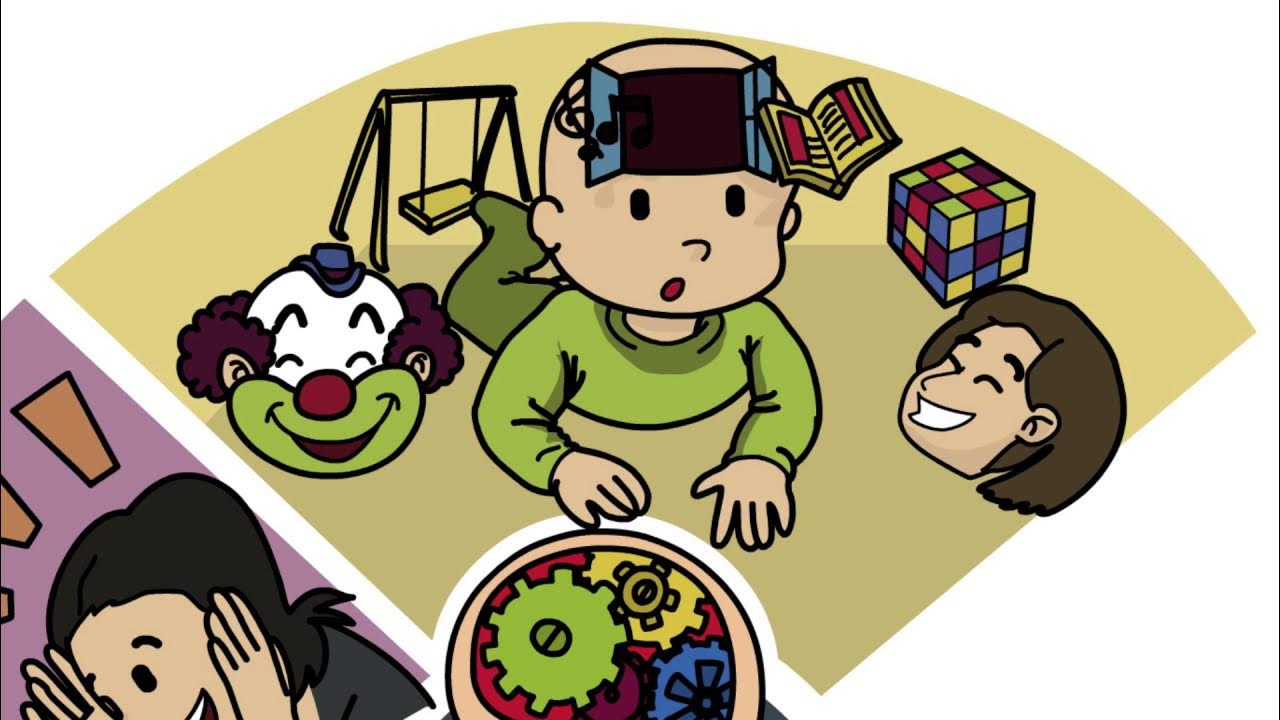How Brains are Built: The Core Story of Brain Development
Summary
TLDRThis video explains how early childhood experiences shape the developing brain, emphasizing the importance of positive interactions between children and caregivers in building a strong foundation for future mental health and development. It highlights the role of 'serve and return' interactions in brain architecture, as well as the impact of stress. While manageable stress can foster growth, toxic stress can cause lasting harm. The video underscores the need for community support in providing nurturing environments to ensure healthy development, ultimately fostering stronger individuals and societies.
Takeaways
- 😀 The early experiences in a child's life shape the physical architecture of their brain, which supports future development.
- 😀 Just as a house needs a sturdy foundation, the brain requires a solid base built through positive interactions with caregivers.
- 😀 Serve and return interactions, such as eye contact, touch, and games like peekaboo, are vital for brain development.
- 😀 Positive stress, like meeting new people or studying, helps children prepare for future challenges and supports brain growth.
- 😀 Toxic stress, such as abuse or neglect without supportive relationships, can damage the developing brain and lead to lifelong health problems.
- 😀 Building a solid brain foundation in early childhood is more effective and less expensive than trying to fix damage caused by toxic stress later.
- 😀 Executive function and self-regulation skills, similar to air traffic control, help children manage stress, attention, and make decisions.
- 😀 A child's brain must manage various demands like paying attention, following rules, and dealing with emotions, much like a busy airport control tower.
- 😀 Developing strong executive function and emotional regulation is crucial for a child's mental health and overall development.
- 😀 Communities play a key role in supporting children's development by ensuring they have nurturing experiences, which is vital for building a healthier future.
Q & A
How does the early childhood experience affect brain development?
-Early childhood experiences physically shape the developing brain. Positive interactions between young children and caregivers help build a solid brain architecture, which supports future mental function and overall health.
What is the analogy used to explain how a brain is developed?
-The analogy compares brain development to the construction of a house. Just as a house needs a sturdy foundation to support the walls and roof, the brain requires a strong foundation built on positive early experiences to support future development.
What is meant by 'serve and return' interactions in child development?
-'Serve and return' refers to the back-and-forth interactions between a caregiver and a child, such as eye contact, touch, or simple games like peekaboo. These interactions help build the foundation for healthy brain development.
What is the difference between healthy stress and toxic stress in early childhood?
-Healthy stress, such as meeting new people or studying for a test, helps prepare children for future challenges. Toxic stress, on the other hand, arises from serious, ongoing hardships like abuse or neglect without the support of a caregiver, which can harm brain development.
How does toxic stress impact a child's brain?
-Toxic stress can damage the basic structures of a child's developing brain. Without a solid foundation of support, the child is at risk for lifelong health problems, developmental issues, and even addiction.
Can the damage caused by toxic stress be repaired later in life?
-While some of the damage caused by toxic stress can be addressed later on, it is much more effective, less costly, and easier to build solid brain architecture during the early years.
What is the role of executive function and self-regulation in a child's development?
-Executive function and self-regulation are essential for managing mental and emotional processes. These skills help children pay attention, plan ahead, remember tasks, and manage stress, much like air traffic control helps regulate the flow of information and tasks at a busy airport.
What analogy is used to explain the concept of executive function in children?
-The analogy compares a child's brain to an airport control tower. Just as the tower manages the landing and takeoff of planes, a child's brain needs to regulate multiple tasks and emotional responses to avoid 'mental collisions.'
Why is it important to develop effective 'air traffic control' in the brain during childhood?
-Developing strong 'air traffic control' helps children prioritize tasks, regulate their emotions, and avoid mental overload. These abilities are crucial for maintaining positive mental health and functioning well in the future.
What is the role of communities in supporting children's brain development?
-Communities play a critical role in ensuring that all children have access to nurturing experiences, which are essential for positive brain development. Strong societies are built on healthy, well-supported individuals, and it is up to everyone to contribute to this process.
Outlines

This section is available to paid users only. Please upgrade to access this part.
Upgrade NowMindmap

This section is available to paid users only. Please upgrade to access this part.
Upgrade NowKeywords

This section is available to paid users only. Please upgrade to access this part.
Upgrade NowHighlights

This section is available to paid users only. Please upgrade to access this part.
Upgrade NowTranscripts

This section is available to paid users only. Please upgrade to access this part.
Upgrade NowBrowse More Related Video

Early Years Resources: The Science of Early Childhood Brain Development

How Early Childhood Experiences Affect Lifelong Health and Learning

O NEURODESENVOLVIMENTO INFANTIL

InBrief: The Science of Early Childhood Development

Adverse Childhood Experiences (ACEs): Impact on brain, body and behaviour

How a child's brain develops through early experiences
5.0 / 5 (0 votes)